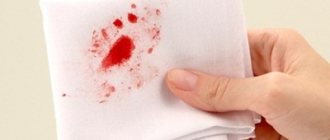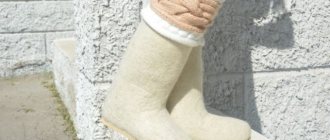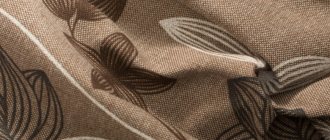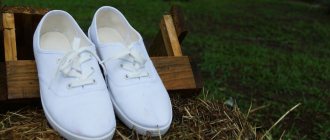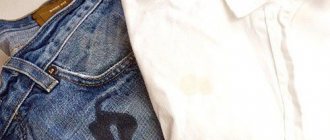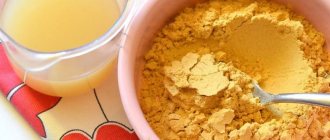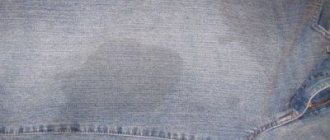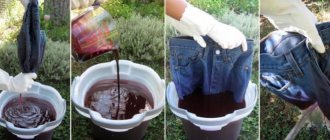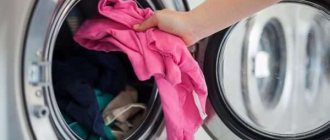Every wardrobe should have white socks as they fit into any style.
The problem is that they get dirty very quickly and after the first wash they lose their original fresh appearance. To prevent this, you need to wash them correctly.
In this article we will tell you how to easily and quickly wash white socks from black soles and dirt to snow-white at home.
Preparation for the process
Before you start washing your socks, you should prepare them:
- sorted by color and type of material;
- cleaned of dust and particles of dirt, for which they turn it inside out and shake it;
- select the appropriate detergent.
To improve the quality of subsequent washing, it is recommended to pre-soak light-colored socks.
For this, both regular washing powders for white laundry and solutions from improvised products are suitable:
- boric acid,
- vinegar,
- laundry soap,
- ammonia,
- peroxide.
The basin is half filled with warm water (no more than 30 °C) and the selected product is mixed into it . Then the laundry is immersed there and left for at least 3 hours (if it is very dirty, it can be longer). After this, you can start washing.
To correctly determine the method of washing socks, do not throw away the tags from new pairs. They usually contain important information about the product and care instructions from the manufacturer.
Washing in a washing machine
Wash socks in an automatic machine at a temperature of 40 to 60 °C . For cotton, synthetics and nylon, a temperature of 60 °C is suitable. Select a mode according to the type of fabric.
After putting the socks in the machine, pour washing powder, bleach or a home remedy into a special compartment.
It is recommended to add baking soda (2-3 tbsp) to the rinsing compartment. It not only promotes better rinsing of laundry, but also enhances the whitening effect.
After this, they start the machine and wait for the end of the cycle. It is advisable to throw several tennis balls into the drum along with the socks. Due to them, greater friction of the material will be created, which contributes to better cleaning.
Store-bought bleaches with soda
| Name | Characteristics | Compound | price, rub. |
| "AntiPyatin" | White powder, completely soluble in water. Safe for washing baby clothes |
| 50–100 per 200 g |
| "Persol" | The powder is intended for colored and white fabrics. Contraindications: delicate silk. Softens water. Disinfects |
| 50–150 per 200 g |
| "Nanny" | Suitable for all types of fabrics. Works better on fresh stains |
| from 80 for 350 g |
| "Vanish" | Gently cleans fabrics even from old stains. Works in both hot and cool water |
| from 150 for 350 g |
| "Eared Nanny" | Powder for whitening children's clothes |
| from 130 for 300 g |
Try using soda ash to whiten your white socks and they will become as good as new.
How to whiten white sneakers with baking soda.
Removing dirt manually
Washing socks by hand is considered delicate, so it should be done according to certain rules so that the socks do not lose their original shape.
How to proceed:
- Pre-soak the socks, which will reduce the washing time.
- Then pour fresh water into a basin slightly above room temperature.
- Start washing by creating friction of the material with your hands. At the same time, you should not be too zealous so as not to stretch or tear your socks.
When doing push-ups, do not twist your socks. It is enough to crumple them into a ball and lightly squeeze them in your hand.
Read more about hand washing white socks here.
“Shave” socks: methods for removing pills
Even the most expensive and high-quality white socks are not immune to the appearance of dark pills. If this sure sign of “wear and tear” appears for the following reasons.
- Fabric structure. Over time, pills will inevitably appear on natural socks (cotton, linen, wool). But synthetic ones (viscose, nylon) will practically not peel.
- Wrong washing mode. Choose the temperature, washing time, and spin speed wisely (for the fabric).
- Using the “wrong” means. For delicate materials, take special gentle gels. They will prevent the appearance of pellets.
- Intense friction. When washing by hand, do not rub the fabric excessively. This will only ruin the product.
The pellets can only be removed mechanically. How it's done?
Shaver (machine for cutting pellets)
- Turn on the machine (battery operated).
- Using circular movements, gently work over problem areas.
- Empty the pellet container.
Shaver
- Take a not too sharp (not new) razor.
- Stretch the sock well, or even better, put it on your foot.
- Move the machine from bottom to top with careful movements.
Scotch tape, band-aid or adhesive tape
- Cut a strip of tape to the required length.
- Apply the tape to the “stuffed” area with good pressure.
- Rip it off sharply.
Adhesive tape will help get rid of fresh pellets, but it is powerless against neglected nodules.
How to bleach until snow-white and get rid of black soles?
Home remedies to help whiten socks have been successfully used for hand and machine washing. Here are some of the most productive recipes.
Soda
Instructions for action:
- Add 100 g of soda to clean water and soak socks in it for 15-20 minutes.
- Then they are placed in the machine drum.
- 4 tbsp are poured into the compartment intended for powder. l. soda
- Set the temperature to 40 °C and run a normal wash cycle.
Hydrogen peroxide
With the help of peroxide, you can quickly deal with even strong stains, provided that they are of biological origin (sweat, blood, grayness, yellowness).
The most effective will be 2 options:
Suitable for pure white socks.
For 3 liters of cool water, take 70-80 ml of hydrogen peroxide and the same amount of ammonia. Soak socks in this solution and rinse them after 12 hours, and then wash them in any way.- Acceptable for white socks with a pattern.
Squeeze a little toothpaste out of the tube into 80 ml of peroxide. The resulting mixture is used to treat contaminated areas and after 10-15 minutes, wash them off by rinsing in cold water.
Vinegar
This method can be used for socks made of natural fabrics, but it will not harm synthetics either.
Before the main wash, soak the stockings for 20-30 minutes in the following solution: add 2 large spoons of vinegar to 2-3 liters of water.
Bleaches
Nowadays you can find all kinds of bleaches on the shelves of hardware stores. They come in the form of powders, capsules and gels. They are also distinguished by composition: oxygen and optical.
The most popular are:
- Vanish;
- Ariel;
- BiMax;
- White;
- Clean Home;
- Beckmann.
The release form, volume and price of each are shown in the table:
| Name of washing and bleaching products | Volume | Cost, rub. |
| Ariel (gel) | 1.3 liters | 360 |
| BiMax (powder) | 3 kg | 530 |
| Vanish Oxy | 500 g | 440 |
| Clean Home | 1 l | 230 |
| Dr. Beckmann | 200 g | 215 |
| White | 1 l | From 17 to 30 |
When choosing a product, it is important to read the instructions , since it must be suitable for the material of the socks. It should also be marked “For white linen.”
Domestos or another bleach containing chlorine works well for black stains on socks from faded shoes. Just use it exclusively for washing cotton socks.
When working with chemical detergents, follow the instructions on the packaging. This applies to dosage and washing temperature.
Lemon juice
Lemon juice effectively removes grass and juice stains.
The recipe is as follows:
Squeeze the juice from one citrus and pour it into water (about 7 liters).- Soak hosiery in the solution for 3-4 hours.
- If stains remain after this, then additionally treat them with a slice of lemon and lightly rub the fabric.
- 20 minutes after such manipulations, the socks are sent to be washed.
If the socks have colored decorations, then the juice should be applied only to white fabric so that the elements do not become discolored.
Aspirin
When your white socks have become slightly faded and are no longer as snow-white as when they were new, you can resort to the following option:
- Grind 2 tablets of acetylsalicylic acid.
- Mix with a small amount of washing powder.
- Pour the mixture into the compartment of the automatic machine and start the wash in the standard mode.
You can put 3-4 tablets in the drum with laundry, and pour bleaching detergent into the tray. It is permissible to experiment with the dosage of the drug, which will not harm the laundry.
Do not use aspirin frequently when machine washing. This is due to the fact that it contains acid, which in large quantities can damage the machine.
In the case of hand washing, dissolve the same number of tablets in 3 liters of warm water and soak socks in this solution overnight. And in the morning they are washed.
Turpentine
Even extremely washed socks can be restored to their original whiteness with the help of turpentine.
For pre-soaking you will need 10-12 liters of water and 3 tbsp. l. turpentine _ Immerse the laundry in the solution and wait 3 hours.
Then wash in the machine as usual, but with an additional rinse.
Ammonia
Ammonia is available in almost every home medicine cabinet. So, to wash heavily soiled white socks, you need to dissolve it in water.
70-80 ml will be enough. The laundry is soaked in this solution for 2 hours and washed by hand or using a machine .
Boric acid
Before you start washing light-colored but dirty socks, soak them for 3 hours in the following product: dissolve boric acid in water (concentration 1:10). Since the acid eats away dirt, subsequent washing will be more effective.
Laundry soap
The surest way to remove stubborn stains on laundry, which our grandmothers used, is laundry soap.
Just thoroughly lather your socks with it and rinse in warm water. Similar actions are repeated 2-3 times. Then the socks are dried.
The best stain removers for white socks
To remove both fresh and old, stubborn stains, you can use special stain removers that penetrate the fabric structure and remove the pigment from the fibers.
Let's look at the most popular stain removers that can be used to clean white socks.
| Product name | ||
| 1 | Heitmann | More details |
| 2 | UDALIX | More details |
| 3 | Vanish | More details |
| 4 | Eared nanny | More details |
1
Heitmann
Dissolve half a scoop of stain remover in half a glass of hot water. Apply the liquid to dirty socks and leave for 20 minutes. After that, wash it.
Pros:
- A very effective product that removes all types of stains from all fabrics.
- Doesn't spoil the color of things.
- Neutralizes unpleasant odors.
Minus:
- High price.
2
UDALIX
Wet the stain a little with warm water and rub it with a stain remover stick. After 15 minutes, rub the stained area and wash the item.
Pros:
- Suitable for processing any fabrics.
- The pencil is easy to use.
Minus:
- It doesn't always help to remove traces of black soles from socks.
3
Vanish
Mix ¼ scoop of stain remover with ¾ scoop of warm water. Apply the resulting paste onto the stain and rub a little with the bottom of a spoon. After 2 minutes, rub the item again and put it in the wash.
Pros:
- Removes even old stains and neutralizes odor.
- Instant effect - does not require long soaking.
Minuses:
- Quite a high price.
- Strong smell.
4
Eared nanny
Pre-soak your socks with a small container of stain remover for 20-25 minutes or add it to the washing machine before washing.
Pros:
- An absolutely safe and hypoallergenic product that is also suitable for children's socks.
- Has a whitening effect.
Minus:
- Does not remove old marks and dirt.
Features depending on the fabric (cotton, synthetics, wool)
To understand how to wash socks, you need to decide on the type of material from which they are made. It's easier to find out by reading the tag. If this is not possible, then they are determined by touch.
Thus, woolen and synthetic products require a more careful approach than cotton ones . Soak them briefly and wash them at 40°C, preferably by hand. For synthetics it is better to take washing powder, for wool - gel.
To prevent pilling from appearing on woolen socks, they should be washed in a machine with the addition of conditioner and on a delicate cycle.
Cotton products can be boiled . To do this, add washing powder and a couple of lemon slices to boiling water. Then put the socks there and boil them for a quarter of an hour. Afterwards, all that remains is rinsing.
Useful tips
Here are some useful tips on the topic:
white socks are washed after a single wear;- do not wear white socks if the insoles are dark;
- carefully take care of the internal condition of the shoes, systematically cleaning them from dust and all kinds of debris;
- use deodorants for feet so that they sweat less and do not leave yellow spots on socks;
- Do not wash wool socks in hot water, otherwise they will shrink.
Choose hand or machine wash
Some housewives believe that with regular washing it is impossible to achieve ideal whiteness and cleanliness. Some people believe that the “automatic machine” is not able to cope with pollution better than good old boiling.
In any case, in order to quickly wash our socks, we will choose the method that we are used to using.
Each method is convenient in its own way, the main thing is to follow the rules and know some tricks. Today, there are many effective ways to remove dirt from white socks, and they all adhere to several principles.
